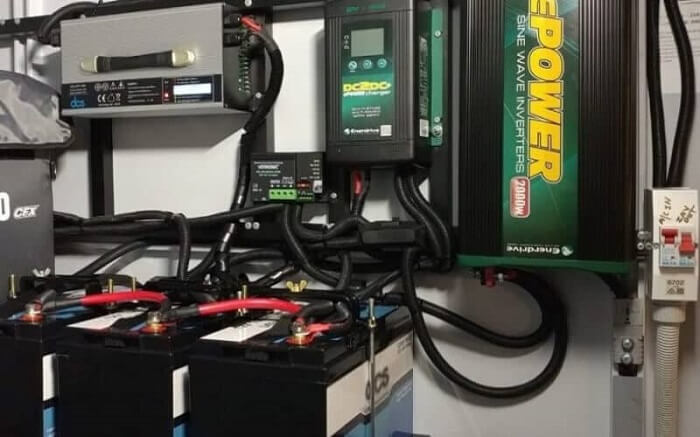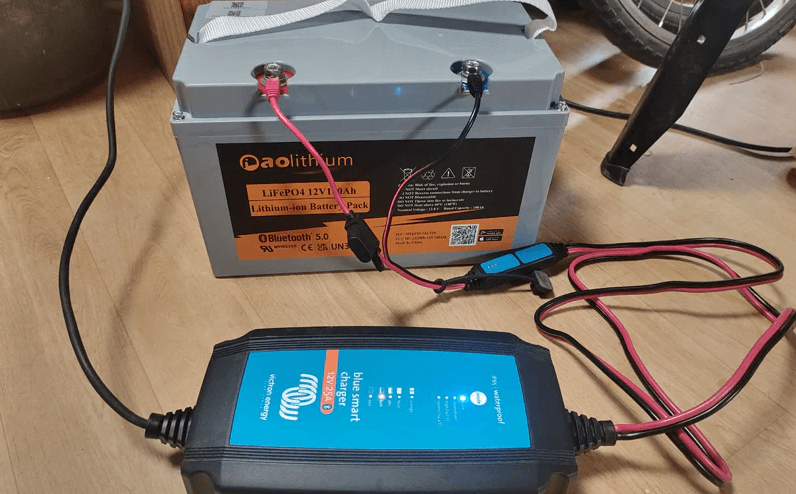When it comes to camping, one of the most important things you need to worry about is your battery backup. You need to make sure that you have enough power to last you through your trip, whether that means charging up your devices or running appliances.
Inverters are a great way to charge your battery while on the road, but not all inverters are created equal. So, do you completely depend on the RV inverter to charge your battery?
The answer to this question is a bit complicated. In short, it depends on the type of inverter that you have and how you are using it.
Which Types Of RV Inverter Should Use for Battery Charging?
There are three main types of RV inverters:
1. Modified sine wave,
2. Pure sine wave, and
3. Dual-purpose.
Modified sine wave inverters are the most common and are typically used for small devices like phones or laptops.
Pure sine wave inverters are more expensive but provide cleaner power and can be used for larger devices like microwaves or TVs.
Dual-purpose inverters can be used for both small and large devices but are more expensive than pure sine wave inverters.
But, not all inverters are created to charge batteries. If you’re looking for an inverter to primarily use for battery charging, make sure to get a pure sine wave inverter with a battery charger.
How does an RV Inverter Work?

RV inverters take the DC power from your batteries and convert it into AC power. This is the same kind of power that you would get from your outlets at home.
Most RV inverters have a built-in battery charger that will automatically charge your batteries when they are connected to shore power or a generator.
You can also use an RV inverter to charge your batteries while you are driving, but this will put a strain on your engine and decrease your gas mileage.
Which Type of Battery Can I Charge Through RV Inverter?

You can use an RV inverter to charge any type of battery, but the most common are lead-acid batteries.
Lead-acid batteries are the kind that you typically find in RVs, cars, and boats. These batteries need to be regularly charged in order to maintain their power.
If you have a lead-acid battery, you will need to make sure that your RV inverter is specifically designed for lead-acid batteries.
How Do I Set Up My RV Inverter For Battery Charging? Step By Step
Before you can start using your RV inverter to charge your batteries, you need to set it up properly.
1. Choose the right type of inverter: Make sure that you have a pure sine wave inverter with a built-in battery charger.
2. Connect the inverter to your battery: Most inverters will have instructions on how to do this.
3. Connect your devices to the inverter: Once the inverter is connected to your battery, you can plug in your devices.
4. Turn on the inverter: Make sure that the switch is in the “on” position.
5. Start charging your batteries: The inverter will automatically start charging your batteries once it is turned on.
You should always consult your RV inverter’s manual for specific instructions on how to set it up.
The Advantages and Disadvantages of Using an RV Inverter To Charge Battery
There are both pros and cons to using an RV inverter to charge your battery.
Pros:
– You can charge your battery while driving, so you don’t have to worry about running out of power.
– You can use your RV inverter to power small devices like phones or laptops.
– Some RV inverters come with a built-in battery charger, so you don’t have to worry about buying one separately.
Cons:
– Using an RV inverter to charge your battery can put a strain on your engine and decrease your gas mileage.
– Not all inverters are created equal, so you need to make sure that you get a pure sine wave inverter with a built-in battery charger.
– RV inverters can be expensive, so you need to make sure that you are getting one that is right for your needs.
Overall, the pros outweigh the cons when it comes to using an RV inverter to charge your battery. Just make sure that you are getting a quality inverter and that you know how to set it up properly.
Frequently Asked Questions:
How long does it take to charge a battery with an RV inverter?
It depends on the size of the inverter and the type of battery you are using. For a 12-volt battery, it will take about 10 hours to charge with a 100-watt inverter.
Can I use my RV inverter to power my whole RV?
It depends on the size of your inverter and the amount of power you need. A small inverter is only meant for charging batteries or powering small electronics. A larger inverter can power more appliances, but it will put a strain on the RV’s electrical system.
Is it better to charge my battery with an inverter or a generator?
It depends on your needs. If you only need to charge the battery occasionally, then an inverter is a good option. However, if you need to power more appliances or run the RV’s electrical system for extended periods of time, then a generator is a better choice.
Conclusion
The short answer is that yes, an RV inverter does charge your battery while on the road. However, there are a few things to keep in mind in order to get the most out of your inverter.
First, make sure that you have a quality inverter that is designed for RVs. Second, remember that the inverter will only charge the battery when the engine is running, so be sure to plan accordingly.
Finally, don’t forget to keep an eye on the battery level and recharge it as needed.

Hi I’m Joiel Borid Creators of RV Outsider. Wild Life’s first camping was started when I’m 8 years old, at the Home Front Yard. Moto of RV Outsider shares my experience, expertise, and knowledge that I learned, and apprises about my next journey. So stay tuned with RV Outsider.
